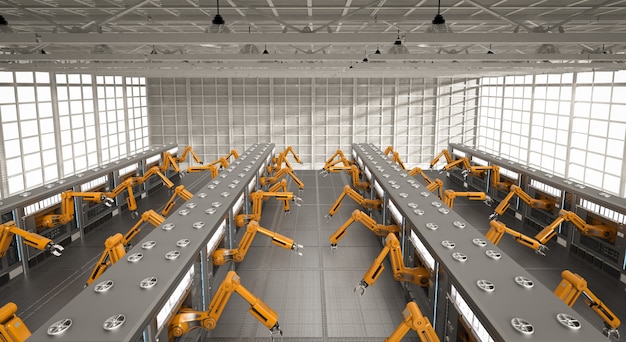Rising Energy Costs: Impact on US Manufacturing & Transportation

The rising cost of energy in the US significantly impacts the manufacturing and transportation sectors by increasing operational expenses, disrupting supply chains, and potentially leading to decreased production and higher consumer prices.
The surge in energy prices is sending ripples throughout the American economy, with the manufacturing and transportation sectors feeling the pinch most acutely. Understanding **how the rising cost of energy impacts manufacturing and transportation sectors in the US** is crucial for businesses and consumers alike, as these cost increases translate to higher prices and potential disruptions in the supply chain.
Energy Price Surge: A Looming Threat to US Industries
The United States has witnessed a significant increase in energy prices, driven by a combination of global events, supply chain disruptions, and increased demand. This surge in energy costs presents a substantial challenge to various sectors of the economy, but the manufacturing and transportation industries are particularly vulnerable due to their high energy consumption.
Understanding the factors contributing to this price surge is essential for mitigating its impact and developing effective strategies to navigate these challenging economic conditions.
Factors Driving Up Energy Costs
Several factors contribute to the rising cost of energy in the US, creating a complex web of challenges for businesses and consumers.
- Geopolitical Instability: Conflicts and tensions in key energy-producing regions can disrupt supply and drive up prices.
- Increased Demand: As the economy recovers and consumer demand rises, so does the demand for energy, leading to price increases.
- Supply Chain Disruptions: Bottlenecks and inefficiencies in the supply chain can limit the availability of energy resources, pushing prices higher.
These factors combine to create a volatile energy market, impacting industries across the board.
In conclusion, the rising energy costs in the US are not simply a reflection of one isolated event but are rather the result of interconnected global and domestic factors that create significant economic challenges for manufacturing and transportation sectors.
Manufacturing Under Pressure: The Rising Energy Costs
The manufacturing sector, a cornerstone of the US economy, relies heavily on energy to power its operations. As energy prices rise, manufacturers face increased production costs, reduced profit margins, and the potential for decreased competitiveness in the global market.
Finding ways to mitigate these escalating expenses is crucial for the sustainability and growth of the manufacturing sector in the face of rising energy prices.

Impact on Production Costs
Energy is a significant component of manufacturing production costs. Rising energy prices directly translate to higher expenses for operating machinery, heating and cooling facilities, and transporting raw materials and finished goods.
This increase in production costs can force manufacturers to raise prices, potentially impacting consumer demand and overall sales.
Strategies for Energy Efficiency
Manufacturers can implement various strategies to reduce their energy consumption and mitigate the impact of rising energy costs.
- Investing in Energy-Efficient Equipment: Upgrading to newer, more efficient machinery can significantly reduce energy consumption.
- Optimizing Production Processes: Streamlining operations and reducing waste can minimize energy usage.
- Exploring Renewable Energy Sources: Implementing solar panels or other renewable energy sources can reduce reliance on traditional energy sources.
These strategies enable manufacturers to improve their efficiency and reduce their vulnerability to dramatic fluctuations in energy prices.
In conclusion, the manufacturing sector is heavily impacted by rising energy costs, but by implementing energy-efficient strategies and exploring alternative energy sources, manufacturers can mitigate these impacts and maintain their competitiveness in the market.
Transportation Turmoil: Fuel Price Impact on Supply Chains
The transportation sector is the backbone of the supply chain, responsible for moving goods and materials across the country. This sector is heavily reliant on fuel, meaning that increases in fuel prices have a direct and significant impact on transportation costs and the overall efficiency of supply chains.
Thus, the transportation sector needs to find ways to adapt to unpredictable fuel costs to ensure the constant and affordable movement of goods.
Increased Transportation Costs
Higher fuel prices significantly increase transportation costs for trucking companies, freight operators, and other logistics providers. These increased costs often get passed on to consumers, leading to higher prices for goods and services.
This can have a cascading effect throughout the economy, impacting everything from groceries to consumer electronics.
Alternative Transportation Options
Transportation companies are exploring alternative transportation options to reduce their reliance on traditional fuels.
- Electric Vehicles: Investing in electric trucks and vans can reduce fuel consumption and emissions.
- Rail Transport: Shifting freight from trucks to trains can be more energy-efficient for long-distance transportation.
- Route Optimization: Using technology to optimize routes and reduce mileage can minimize fuel consumption.
By exploring these options, transport companies can improve their operational efficiency in the face of rising costs.

In summary, the transportation sector faces considerable challenges stemming from rising fuel prices, and this requires innovative solutions like alternative transportation options and route optimization to mitigate the impact on supply chains and consumer prices.
The Ripple Effect: Consumer Prices and Economic Instability
The increasing cost of energy has a ripple effect throughout the economy, impacting consumer prices and contributing to economic instability. As businesses in the manufacturing and transportation sectors face higher energy costs, they often pass these costs on to consumers in the form of higher prices for goods and services.
Economists must carefully consider the long-term impacts of rising energy costs to develop strategies to stabilize the economy and protect against further price increases.
Inflationary Pressures
Rising energy prices contribute to inflationary pressures throughout the economy. As the cost of producing and transporting goods increases, businesses raise their prices to maintain profitability. This leads to a general increase in the price level, reducing consumers’ purchasing power.
Inflation can erode consumers’ savings and make it more difficult for them to afford essential goods and services.
Impact on Consumer Behavior
Higher energy prices can impact consumer behavior, leading people to reduce spending on non-essential items and services. Consumers may also delay or forgo major purchases, such as cars or appliances, due to concerns about affordability.
This decrease in consumer spending can slow economic growth and lead to job losses in some sectors.
In summary, the impact of increased energy costs on consumer prices and economic stability are a serious concern, as they can lead to inflation, reduced consumer spending, and overall economic stagnation.
Government Initiatives and Policy Responses
The government plays a crucial role in addressing the challenges posed by rising energy prices. Various initiatives and policies can help mitigate the impact on the manufacturing and transportation sectors, as well as protect consumers from rising prices.
Government policies are essential for supporting alternative energy development and ensuring that businesses and consumers can navigate the impacts of high energy costs.
Incentives for Renewable Energy
Governments can provide incentives for businesses and individuals to invest in renewable energy sources, such as solar, wind, and geothermal. These incentives can include tax credits, grants, and loan programs.
By promoting the development and adoption of renewable energy, governments can reduce reliance on fossil fuels and stabilize energy prices.
Fuel Efficiency Standards
Governments can set fuel efficiency standards for vehicles and equipment to reduce fuel consumption. These standards can encourage manufacturers to develop more fuel-efficient technologies and promote the adoption of alternative fuels.
- CAFÉ standards: Corporate Average Fuel Economy standards for cars and light trucks, requiring manufacturers to meet certain fuel efficiency benchmarks.
- Heavy-duty truck standards: Regulations to improve the fuel efficiency of commercial trucks and buses.
The implementation of and adherence to government-mandated efficiency standards can lead to significant energy savings and reduced emissions.
In conclusion, proactive steps from governments to incentivize renewable energy and enforce fuel efficiency standards are vital in mitigating the impact of rising energy prices and fostering a more sustainable energy future in the United States.
Long-Term Sustainability: Investing in Alternative Energy
Investing in alternative energy sources is crucial for long-term sustainability and reducing the vulnerability of the manufacturing and transportation sectors to volatile energy prices. Transitioning to a cleaner, more diversified energy mix can create a more stable and resilient economy.
A focus on alternative energy is key to mitigating the long-term negative impacts of rising costs on critical sectors of the economy.
Developing Renewable Energy Infrastructure
Building the infrastructure needed to support renewable energy sources, such as solar farms, wind turbines, and electric vehicle charging stations, is essential for the transition to a cleaner energy future. This requires significant investment and collaboration between governments, businesses, and communities.
Expanding renewable energy infrastructure can create new jobs and stimulate economic growth in the clean energy sector.
Supporting Innovation in Energy Technology
Investing in research and development of new energy technologies can lead to breakthroughs that further reduce reliance on fossil fuels and improve energy efficiency. This can include areas such as energy storage, smart grids, and advanced biofuels.
Supporting innovation in energy technology can create new opportunities for businesses and entrepreneurs and help the US maintain its competitiveness in the global energy market.
Ultimately, investing in alternative energy and new technologies is fundamental to achieving energy independence and reducing the impact of rising energy prices on key economic sectors in the long term.
| Key Point | Brief Description |
|---|---|
| 💰 Rising Production Costs | Manufacturers face higher expenses, potentially raising consumer prices. |
| 🚚 Transportation Impact | Increased fuel costs affect logistics, leading to pricier goods. |
| ☀️ Renewable Alternatives | Incentives for clean energy can reduce reliance on fossil fuels. |
| 🌱 Long-Term Sustainability | Investing in alternative energy is crucial for economic resilience. |
Frequently Asked Questions (FAQ)
▼
Rising energy costs are due to geopolitical tensions, increased demand as the economy recovers, and significant disruptions to the global supply chain affecting resource availability and prices.
▼
Increased energy costs raise production expenses for manufacturers, potentially decreasing profit margins and impacting competitiveness, as they must balance cost absorption and consumer pricing.
▼
The transportation sector experiences higher operational costs due to fuel price increases, leading to increased prices for transporting goods and potentially disrupting supply chains.
▼
Governments can implement policies that incentivize investment in renewable energy sources and set fuel efficiency standards to reduce dependency on fossil fuels and stabilize prices for consumers.
▼
Investing in alternative energy reduces long-term vulnerability to energy price volatility, promotes sustainability, and stimulates economic growth in the clean energy sector, fostering a stable economy.
Conclusion
In conclusion, the escalating energy costs present a multifaceted challenge to the US manufacturing and transportation sectors, with potential ramifications for consumer prices and overall economic stability. Addressing this issue requires a comprehensive approach encompassing energy-efficient measures, governmental support for renewable energy, and strategic investments in alternative energy sources. By adopting these measures, the US can mitigate the adverse effects of rising energy prices and pave the way for a more sustainable and resilient economic future.






